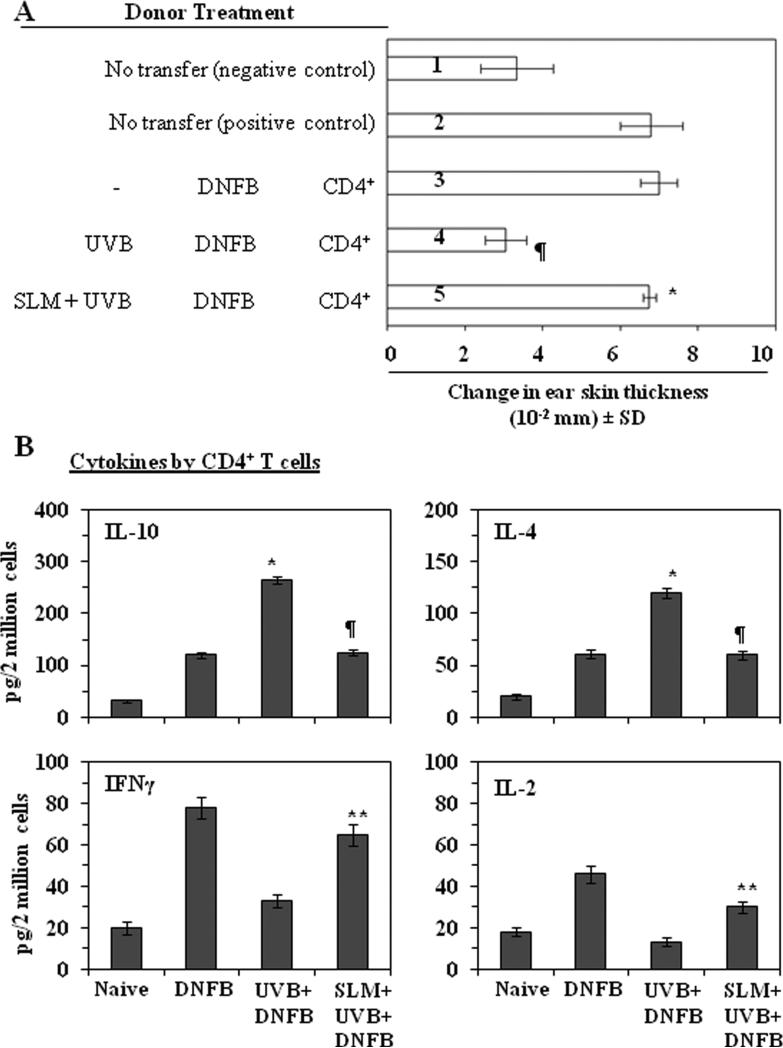Figure 5.
Silymarin prevents transferable UVB-induced suppression of CHS through modulation of activity or function of CD4+ suppressor T cells. (A), The donor mice were treated as described in Figure 4, Panel A. CD4+ T cells were positively selected from the spleens and lymph nodes using the MACS system. CD4+ T cells (8×106) were injected i.v. into naïve recipient mice. The recipient mice were sensitized with DNFB and ear was challenged 5 days after sensitization. The change in ear thickness is reported as the mean of millimeters (mm × 10-2) ±SD, n=5 per group. Those naïve mice that received CD4+ T cells from UVB-exposed donor mice that were treated with silymarin showed a greater CHS response than UVB-exposed mice that were not silymarin treated. *Significantly greater CHS response versus recipient of T cells from UVB plus DNFB treated mice (4th bar), P<0.001; ¶Significantly lower CHS response versus the positive control group (2nd and 3rd bar), P<0.001. (B), Treatment of mice with silymarin decreases the production of IL-4 and IL-10 but increases the secretion of IFNγ and IL-2 by CD4+ T cells. CD4+ T cells were isolated from the different treatment groups, as described in Materials and methods. The CD4+ T cells were then co-cultured with DNBS-labeled BM-DC for 48 h. The concentrations of cytokines in the cell culture supernatants were estimated by ELISA and are presented as mean ± SD in terms of pg/2 million cells, n=5/group. *Significant increase versus positive control, P<0.001. ¶Significant decrease versus UVB+ DNFB group, P<0.001. **Significant increase versus UVB+ DNFB group, P<0.01.

